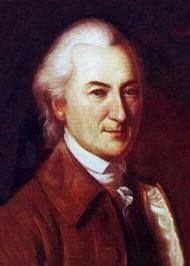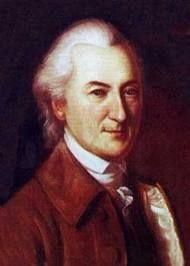buried beneath the rear of the present edifice of the church.
---------------
Date of Death unknown - Inventory of his estate was submitted to Probate on May 30, 1682, so he died before that date.
Contributor: Karen Adams Thrasher (48297424)
A recent article published in the NYG&B Record states: "New evidence suggests that John Ogden and his nephew, Richard Ogden, early settlers of Stamford, Connecticut, originated in Bradford parish in the West Riding of Yorkshire, England." [Louis G. Ogden and Brent M. Owen, "The Ogden Family of Oxenhope: the Probable Yorkshire Origin of John and Richard Ogden, Early Settlers of Stamford, Connecticut, and Proprietors of Hempstead, New York" NYGBR 149:4 (Oct 2018)]
Contributor: John S. (49116368)
———-
Born in West Yorkshire, England, Ogden first appears in America in Stamford, New Haven Colony in 1641. He was an original patentee of Hempstead, Long Island, in 1644 and founder of the North Sea settlement in Southampton in 1650. He was one of the original settlers of New Jersey, relocating to Elizabethtown in 1665. He married Jane Bond(?) in England at an unknown date. Their remains are thought to be buried beneath the rear of the present edifice of the church. (See https://www.wikitree.com/wiki/Ogden-588).
Contributor: John Miller (47257964)
John Ogden, 10th great grandfather of Michael Sealy, was one of our country's earliest patriots – a man who stood tall against the intrusion of foreign intervention in colonial affairs. An accomplished stonemason, John Ogden was born in Lancashire, England in 1609. He immigrated to the New World in 1641, arriving in Rippowam (now Stamford, Connecticut) to build a dam and gristmill for the community. In 1642, he was hired to build the first permanent stone church in Fort Amsterdam, then but a small dusty settlement at the foot of Manhattan Island.
Leaving Stamford in 1644, Ogden spent the next twenty-one years on Long Island. Among other accomplishments there, he established the first commercial whaling enterprise in America.
In 1665 Ogden became one of the original patentees on the Elizabethtown Purchase, the first English settlement in the Colony of New Jersey. For the next nineteen years, until his death in 1682, he led the community though the difficult years of conflict between the settlers – who had purchased their land directly from the Indians – and the English proprietors, who attempted to usurp the settlers' property and their government. On one occasion, he risked almost everything he owned rather than accede to a foreign authority that he felt had no legal standing. This single act of civil disobedience should allow him to stand with the foremost patriots in our history
Ogden's service to his community included many stints as a magistrate, first at the town level and later at the East New Jersey colony level. He was also chosen on many occasions to lead delegations to deal with the Indians, who trusted him completely.
His years in New Jersey also saw Ogden develop and pursue many business interests. He built, with his own hands, a gristmill, a lumber mill, a tanyard, and a brickyard. He also conducted a successful trading business and built another whaling company.
No accurate information has been previously published about John Ogden's earliest years in England. A one-hundred-year-old genealogical study on the Ogden family in America – which has served as the foundation for much of our information about the man – is inaccurate. Using both direct and inferential information, Jack Harpster has recreated that early time, providing the first-ever look at the ancestral home of the Ogdens and how they came to immigrate to America. Harpster has also delved deep into early colonial records to discuss the Ogden family's life and times in America during the mid to late 1600s. The story is highlighted by many colorful incidents and descriptions, often told in the words on contemporary colonial Americans.
John Ogden, The Pilgrim (1609-1982): A Man of More than Ordinary Mark, provides new history – and often rewrites existing history – about an important colonial American pioneer. It is an absorbing, insightful biography set in an exciting but understudies period of American history.
Contributor Michael Sealy.
buried beneath the rear of the present edifice of the church.
---------------
Date of Death unknown - Inventory of his estate was submitted to Probate on May 30, 1682, so he died before that date.
Contributor: Karen Adams Thrasher (48297424)
A recent article published in the NYG&B Record states: "New evidence suggests that John Ogden and his nephew, Richard Ogden, early settlers of Stamford, Connecticut, originated in Bradford parish in the West Riding of Yorkshire, England." [Louis G. Ogden and Brent M. Owen, "The Ogden Family of Oxenhope: the Probable Yorkshire Origin of John and Richard Ogden, Early Settlers of Stamford, Connecticut, and Proprietors of Hempstead, New York" NYGBR 149:4 (Oct 2018)]
Contributor: John S. (49116368)
———-
Born in West Yorkshire, England, Ogden first appears in America in Stamford, New Haven Colony in 1641. He was an original patentee of Hempstead, Long Island, in 1644 and founder of the North Sea settlement in Southampton in 1650. He was one of the original settlers of New Jersey, relocating to Elizabethtown in 1665. He married Jane Bond(?) in England at an unknown date. Their remains are thought to be buried beneath the rear of the present edifice of the church. (See https://www.wikitree.com/wiki/Ogden-588).
Contributor: John Miller (47257964)
John Ogden, 10th great grandfather of Michael Sealy, was one of our country's earliest patriots – a man who stood tall against the intrusion of foreign intervention in colonial affairs. An accomplished stonemason, John Ogden was born in Lancashire, England in 1609. He immigrated to the New World in 1641, arriving in Rippowam (now Stamford, Connecticut) to build a dam and gristmill for the community. In 1642, he was hired to build the first permanent stone church in Fort Amsterdam, then but a small dusty settlement at the foot of Manhattan Island.
Leaving Stamford in 1644, Ogden spent the next twenty-one years on Long Island. Among other accomplishments there, he established the first commercial whaling enterprise in America.
In 1665 Ogden became one of the original patentees on the Elizabethtown Purchase, the first English settlement in the Colony of New Jersey. For the next nineteen years, until his death in 1682, he led the community though the difficult years of conflict between the settlers – who had purchased their land directly from the Indians – and the English proprietors, who attempted to usurp the settlers' property and their government. On one occasion, he risked almost everything he owned rather than accede to a foreign authority that he felt had no legal standing. This single act of civil disobedience should allow him to stand with the foremost patriots in our history
Ogden's service to his community included many stints as a magistrate, first at the town level and later at the East New Jersey colony level. He was also chosen on many occasions to lead delegations to deal with the Indians, who trusted him completely.
His years in New Jersey also saw Ogden develop and pursue many business interests. He built, with his own hands, a gristmill, a lumber mill, a tanyard, and a brickyard. He also conducted a successful trading business and built another whaling company.
No accurate information has been previously published about John Ogden's earliest years in England. A one-hundred-year-old genealogical study on the Ogden family in America – which has served as the foundation for much of our information about the man – is inaccurate. Using both direct and inferential information, Jack Harpster has recreated that early time, providing the first-ever look at the ancestral home of the Ogdens and how they came to immigrate to America. Harpster has also delved deep into early colonial records to discuss the Ogden family's life and times in America during the mid to late 1600s. The story is highlighted by many colorful incidents and descriptions, often told in the words on contemporary colonial Americans.
John Ogden, The Pilgrim (1609-1982): A Man of More than Ordinary Mark, provides new history – and often rewrites existing history – about an important colonial American pioneer. It is an absorbing, insightful biography set in an exciting but understudies period of American history.
Contributor Michael Sealy.




